Einstein and Mesons
Einstein did not get the Nobel prize for relativity, because the Nobel committee members did not believe his general relativity was a complete theory. They thought his special relativity serves only as a step stone toward the general theory. We cannot blame them. There are still many people who holds this view.
-
Let us see how insignificant special relativity was and still is. When we
learn special relativity in college, we start with a thunder simultaneously
striking both ends of a train, and other illustrations. These are only
gedanken experiments. We are not capable of observing those events in the
real world.
- As early as 1927, Paul A. M. Dirac worried about whether the c-number
time-energy uncertainty and Heisenberg's position-momentum uncertainty can
be combined into one Lorentz-covariant form. He invented the Dirac equation
in 1928 which led to the concept of positron and anti-particles. The Dirac
equation has something to do with special relativity. In addition, Dirac
made his life-long efforts to a quantum mechanics consistent with special
relativity, as you can see in the following papers.
- P. A. M. Dirac, Proc. Roy. Soc. (London) A114, 243 (1927).
- P. A. M. Dirac, Proc. Roy. Soc. (London) A183 , 284 (1945).
- P. A. M. Dirac, Rev. Mod. Phys. 21 , 392 (1949).
- P. A. M. Dirac, J. Math. Phys. 4 , 901 (1963).
- In 1962, I was a first-year assistant professor at the University of
Maryland. Paul A. M. Dirac visited the University in October, and I had
to provide convenience to him. I was fortunate enough to have an audience
with him for 30 minutes. At that time, I was a confused young man. I was
led to believe that physics is about the harmony of singularities in complex
planes as stars are in the sky (Chew's bootstrap years). I told Dirac
I was confused and asked him what I should do.
I was like Nicodemus asking Jesus for ultimate wisdom.
Dirac told me American physicists should spend more time on Lorentz covariance. There are many challenging problems. It was three months after Dirac talked with Richard Feynman in Poland. By "American physicists," Dirac could have been talking about Feynman, but he could have said about "physicists of all lands." I know this from the referee reports on my papers on Lorentz covariance, since 1973.
- In 1969, Feynman presented his parton picture of the proton moving
with speed close to that of light. If the proton is a bound state of
quarks like a hydrogen atom, Feynman's partons have properties quite
different from the quarks. It is a very challenging covariance issue.
You may click here for my
webpages dedicated on this issue.
- We all know Feynman diagrams have something to do with special
relativity. We all know that all Feynman diagrams have external legs.
This means they are effective in dealing with scattering problems.
How about bound-state problems in the Lorentz-covariant regime?
In 1970, Feynman gave an invited talk at the spring meeting of the
American Physical Society. For bound-state problems, he told us not
to use his Feynman diagrams, but to start with harmonic oscillators.
Click for a story.
Among those solutions, there is one set of solutions constituting a representation of Wigner's little group dictating internal space-time symmetries of elementary particles in the Lorentz-covariant regime. What is the little group? It consists of Lorentz transformations for a fixed particle momentum. There are six generators for the Lorentz group. Since the momentum freezes three degrees of freedom, the little group has the remaining three degrees of freedom. I learned this directly from Eugene Wigner while I was a graduate students at Princeton (1958-61). Most of my papers, including my PhD thesis, are based on this secret. My thesis advisor was Sam Treiman.
The Lorentz covariance of Maxwell's equations played a very important role in Einstein's development of special relativity. You may be interested in the latest story about this issue. Click here for the story.
The story of the Lorentz group in physics is endless. Let me stop here, but I have to mention one more item. The Lorentz group constitutes the basic mathematical language for optical sciences. You may click here to see how this is possible.
However, in 1930, Wolfgang Pauli used the conservation of energy to predict the existence of neutrinos in the neutron beta decay. By that time, Einstein's E = mc2 was firmly established.

|
| Yukawa with Einstein in Princeton (1953). Photo from Mainichi Shinbun. |
In 1936, Carl Anderson discovered mesons in cosmic rays bombarding this earth, using the cloud chamber he used in his earlier discovery of positrons in 1932. However, it was decided that Anderson's mesons were different from those predicted by Yukawa. These mesons are now called mu-mesons or muons.
In In 1947, Cecil Powell, CÚsar Lattes and Giuseppe Occhialini at the University of Bristol discovered another species of mesons from cosmic rays using emulsions. These mesons indeed turned out to be the particles predicted by Yukawa in 1935. They are now called pi-mesons or pions.
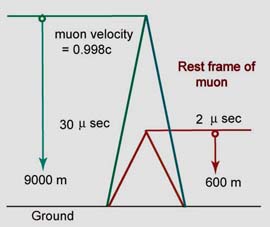
| |
| |

|
Einstein's special theory of relativity is complete enough.
I learned special relativity and this observable muon event from Lincoln Wolfenstein while I was an undergraduate student at Carnegie Tech, now called Carnegie-Mellon University, (1954-58). I was fortunate enough to have a photo with him in 1997 at MIT's faculty dining hall.
During the summer of 1957, I worked at Carnegie Tech's Nuclear Research Center with its 450 Mev cyclotron. It was fascinating to learn that the cyclotron frequency had to be modulated as the proton orbit becomes larger with the increasing proton speed. It was of course due to the mass becoming larger when the proton moves faster. How exciting! Einstein was so close to me.
I learned all these while I was a college student (1954-58), but these items must have been known before 1949, when Einstein became 70 years old. The American Physical Society dedicated to him one of the 1949 issues of the Reviews of Modern Physics. You will be interested in the list of the authors who contributed to this issue. Feynman was too young to be on the list.
You would agree that, also in 1949, the Nobel Committee could have considered a special edition of Nobel prize for Einstein. By 1949, he became the creator of modern particle physics. Indeed, Einstein is very happy to be with Yukawa in this photo.
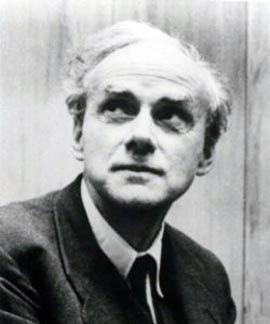
|
|
|

|
|
|
| |
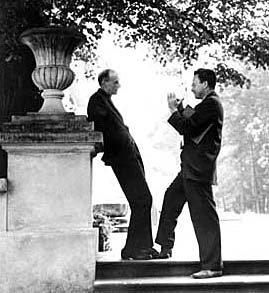
|
| 1962 and 2013 in Jablonna, Poland. |
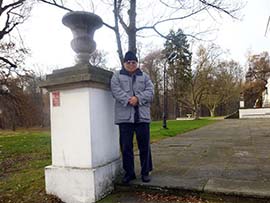
|
- copyright@2009,2015 by Y. S. Kim, unless otherwise specified.
- The photo of Dirac is from the AIP E. Segre Visual Archives.
The photo of Dirac and Feynman is licensed from
the Caltech Photo Archive. This photo was taken by Marek Holzman
during the International Conference on Relativitic Theory of Gravitation
in Warsaw (Poland) on July 25-31 1962, organized by Leopold Infeld.
The image of Jesus and Nicodemus is from "The Picture Bible"
(David C. Cook Publishing Co., Elgin, Illinois, U.S.A., 1978).
- Click here for
Y. S. Kim's Einstein page.
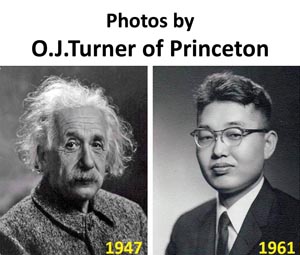
| |
|